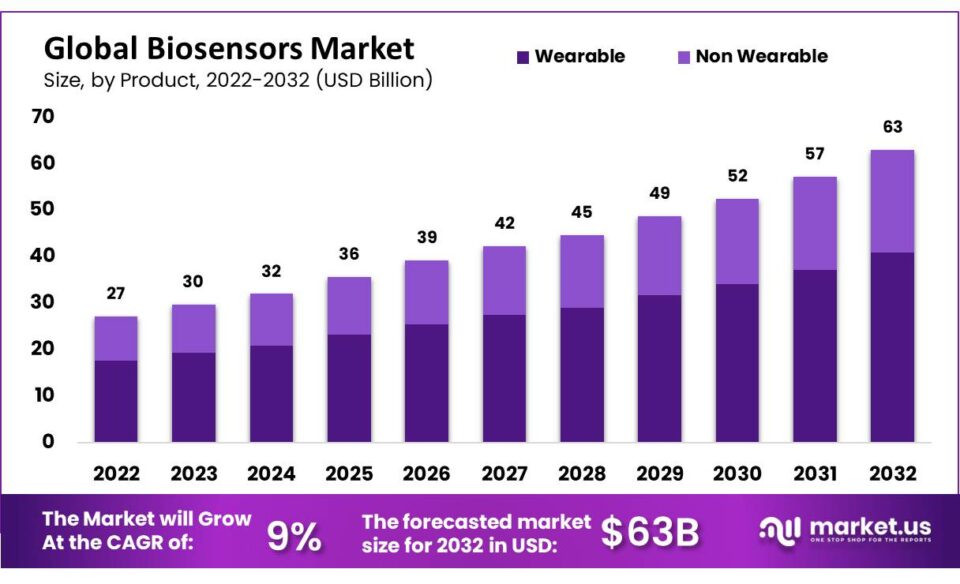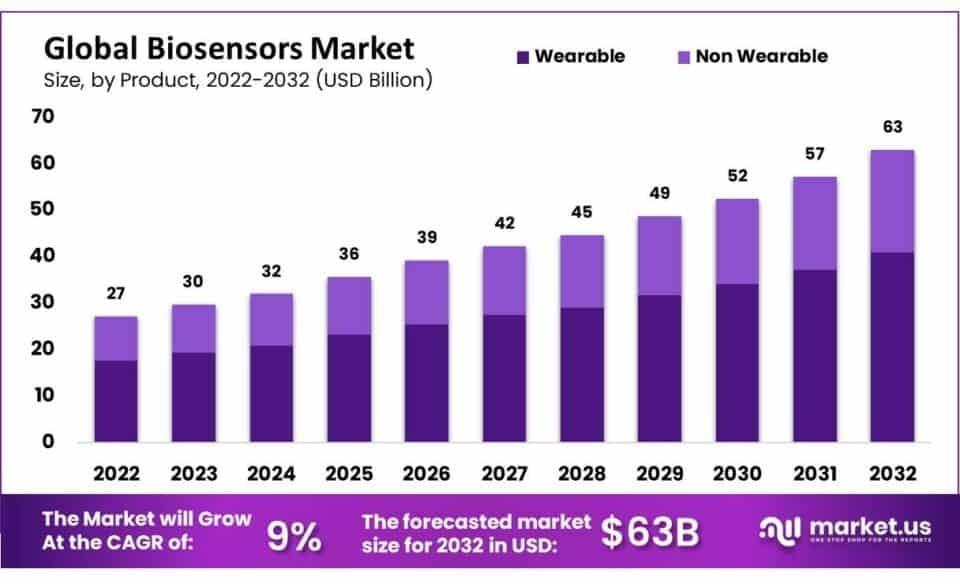The global biosensors market size is expected to be worth around USD 63 billion by 2032 from USD 27.2 billion in 2022, growing at a CAGR of 9% during the forecast period from 2022 to 2032.
In 2025, the Biosensors Market is expanding into environmental and food safety monitoring, powering real-time detection of contaminants. New handheld test strips and compact sensors detect pesticides, heavy metals, and bacterial pathogens in water, produce, and packaged goods.
These devices connect via Bluetooth to mobile apps, alerting users instantly when thresholds are exceeded. Farmers, food processors, and regulatory bodies are adopting this technology to ensure safety compliance and reduce spoilage. As low-cost, on-site biosensors replace lab samples, food supply chains become more transparent, safer, and responsive.
Click here for more information: https://market.us/report/biosensors-market/
Key Market Segments
Based on Technology
- Thermal
- Electrochemical
- Piezoelectric
- Optical
- Other Technologies
Based on Product
- Wearable
- Non-Wearable
Based on Applications
- Medical diagnostics
- Food Toxicity Detection
- Industrial Process Control
- Environmental Analysis
- Agricultural Testing
- Other Applications
Based on End Users
- Home Healthcare Diagnostics
- POC Testing
- Food Industry
- Research Laboratories
- Security & Bio-Defense
Emerging Trends
- Smartphone-linked pesticide sensors for in-field agricultural testing.
- Pathogen-sniffing biosensors for rapid water and food quality checks.
- IoT-enabled dashboards tracking environmental sensor data across supply chains.
- Low-cost paper-based biosensors for global food safety in developing markets.
Use Cases
- A fruit packer uses handheld sensors to test pesticide residues before export.
- A municipality deploys water-safety sensors in rural wells for bacterial alerts.
- A seafood processor integrates fish pathogen sensors into quality control workflows.
- Aid organizations distribute paper biosensors to remote communities to monitor water quality.


